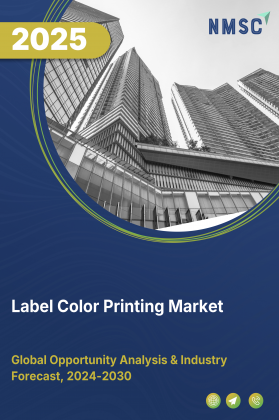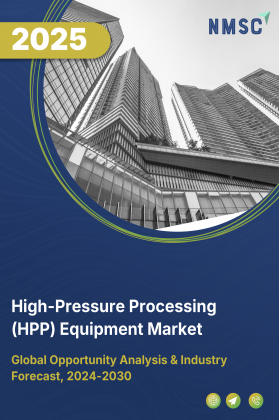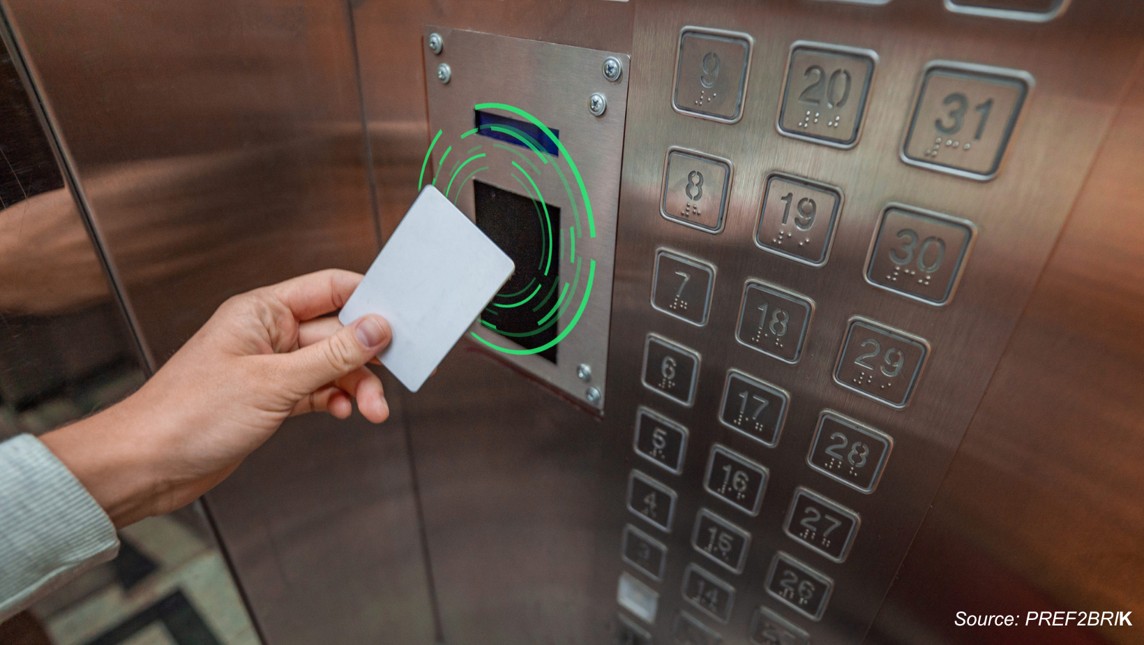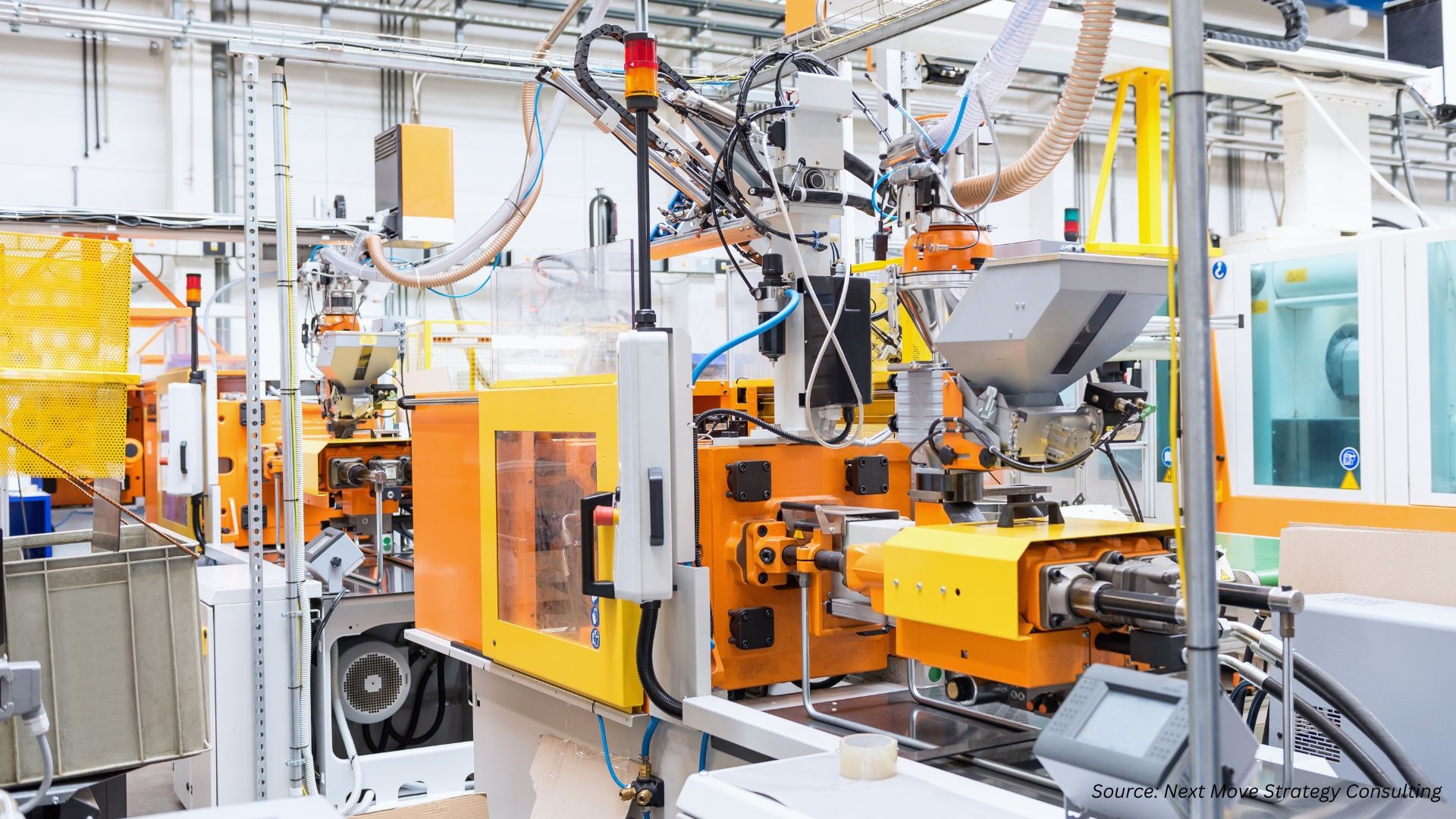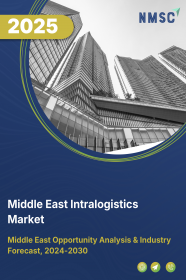
Middle East Intralogistics Market by Component, (Hardware, Software, Services), by Automation Level, (Manual, Semi-Automated, Fully Automated), by End User, (Retail and E-commerce, Automotive, Food and Beverage, Pharmaceuticals, Aviation, Logistics, Semiconductor & Electronics, Consumer Goods, Other End Users) – Opportunity Analysis and Industry Forecast 2023–2030
Industry: Construction & Manufacturing | Publish Date: 17-Oct-2025 | No of Pages: 199 | No. of Tables: 166 | No. of Figures: 111 | Format: PDF | Report Code : CM1065
Market Definition
Middle East Intralogistics Market was valued at USD 142.62 million in 2022, and is predicted to reach USD 535.54 million by 2030, with a CAGR of 17.9% from 2023 to 2030. Intralogistics is a vital aspect of supply chain management, and its market is focused on the design, implementation, and maintenance of internal logistics systems. In order to maximise the flow of materials and effectively and economically meet the company's demands, it entails the movement, storage, and management of commodities within an organisation, such as a factory, warehouse, or distribution centre.
The intralogistics market involves the design, implementation, and maintenance of factory and warehouse systems and includes various industries such as manufacturing, retail, e-commerce, and healthcare. Material handling, inventory control, order fulfilment, and reverse logistics are some of the most frequent applications of intralogistics. The intralogistics industry is expanding as a result of rising need for quick and effective delivery, rising demand for automation, and rising demand for sustainable and environmentally friendly solutions.
Saudi Arabia’s Push for Robotics and AI Drives Intralogistics Advancement
Saudi Arabia is accelerating the adoption of robotics and AI to transform its logistics infrastructure. Backed by its Vision 2030 initiative, the country is investing in smart technologies to automate warehouse operations and enhance supply chain efficiency. Recent partnerships with global tech firms are fostering the development of advanced robotics systems, which directly support the growing demand for automation in intralogistics. These efforts reflect Saudi Arabia’s strategic focus on positioning itself as a regional leader in high-tech logistics.
Uae’s Automation Strategy Accelerates Intralogistics Modernization
The UAE government is playing a pivotal role in advancing robotics and automation across logistics operations. Initiatives such as Dubai’s robotics program me aim to integrate thousands of robots across key sectors, including warehousing and distribution. This government-led approach is not only increasing operational speed and accuracy but also attracting private sector investment. As a result, the UAE is emerging as a key driver of intralogistics innovation in the Middle East.
High Initial Investment and Skilled Workforce Shortage Hamper Market Adoption
The adoption of intralogistics systems in the Middle East is often hindered by high upfront investment costs combined with a shortage of skilled technical personnel. While automation promises long-term efficiency gains, the initial cost of deploying advanced systems such as AS/RS, mobile robotics, and AI-driven software remains substantial. This poses a challenge, particularly for SMEs and newly established logistics firms that operate on tighter budgets. Moreover, the region faces a growing demand for specialized talent capable of operating and maintaining these complex systems. Without adequate local expertise, companies may delay automation plans or rely on expensive external consultants, slowing the overall market adoption across the region.
Advancement of AI-enabled Warehouse Solutions Unlocks Scalable Growth Potential
The rising integration of artificial intelligence (AI) into warehouse operations is opening new avenues for growth in the Middle East intralogistics market. AI-powered systems are enhancing core functions such as inventory forecasting, dynamic storage allocation, and real-time decision-making. These smart solutions enable warehouses to respond more flexibly to demand fluctuations and optimize space and labor utilization—key requirements for sectors like e-commerce and retail that are experiencing rapid growth in the region.
Leading players are now deploying AI to improve process automation, reduce human error, and accelerate throughput. For example, AI-enabled vision systems and predictive analytics are being used to detect anomalies, track goods, and anticipate restocking needs. As governments in the Middle East promote smart logistics under digital transformation strategies, the adoption of AI-driven intralogistics systems is expected to accelerate, presenting scalable and sustainable growth opportunities for technology providers and logistics operators alike.
Competitive Landscape
The Middle East intralogistics industry includes several market players such as Jungheinrich AG, SNS GLOBAL, SSI Schafer, Muratec (Murata Machinery, Ltd.), Honeywell International Inc., DEMATIC, BEUMER Group, Daifuku Ltd, Siemens AG, Bowe Intralogistics, KNAPP, Swisslog, Crown Equipment Taiwan, STILL GmbH, Hanel Corporation, and others.
Middle East Intralogistics Market Key Segments
By Component
-
Hardware
-
Automated Storage & Retrieval Systems (AS/RS)
-
Unit-Load AS/RS
-
Mini-Load AS/RS
-
Vertical Lift Modules (VLMs)
-
Carousel AS/RS
-
-
Conveyors Systems
-
Vertical Lift Modules
-
Forklifts
-
Pallet Jacks & Stackers
-
Shuttle Systems
-
Industrial Robots
-
Mobile Robots
-
Automated Guided Vehicles (AGVs)
-
Autonomous Mobile Robot (AMR)
-
-
-
Software
-
Warehouse Management System (WMS)
-
Transportation Management System (TMS)
-
Yard Management Software
-
Inventory Management Software
-
Labor Management Software
-
Other Software
-
-
Services
By Automation Level
-
Manual
-
Semi-Automated
-
Fully Automated
By End User
-
Retail and E-commerce
-
Automotive
-
Food and Beverage
-
Pharmaceuticals
-
Aviation
-
Logistics
-
Semiconductor & Electronics
-
Consumer Goods
-
Other End Users
By Region
-
Middle East
-
Saudi Arabia
-
United Arab Emirates (UAE)
-
Israel
-
Qatar
-
Kuwait
-
Oman
-
Other Countries
-
Key Players
-
Jungheinrich AG
-
SNS GLOBAL
-
SSI Schafer
-
Muratec (Murata Machinery, Ltd.)
-
Honeywell International Inc.
-
DEMATIC
-
BEUMER Group
-
Daifuku Ltd
-
Siemens AG
-
Bowe Intralogistics
-
KNAPP
-
Swisslog
-
Crown Equipment Taiwan
-
STILL GmbH
-
Hanel Corporation
Report Scope and Segmentation
|
Parameters |
Details |
|
Market Size in 2022 |
USD 142.62 Million |
|
Revenue Forecast in 2030 |
USD 535.54 Million |
|
Growth Rate |
CAGR of 17.9% from 2023 to 2030 |
|
Analysis Period |
2022–2030 |
|
Base Year Considered |
2022 |
|
Forecast Period |
2023–2030 |
|
Market Size Estimation |
Million (USD) |
|
Growth Factors |
|
|
Companies Profiled |
15 |
|
Market Share |
Available for 10 companies |
|
Customization Scope |
Free customization (equivalent up to 80 working hours of analysts) after purchase. Addition or alteration to country, regional, and segment scope. |
|
Pricing and Purchase Options |
Avail customized purchase options to meet your exact research needs. |

















 Speak to Our Analyst
Speak to Our Analyst




